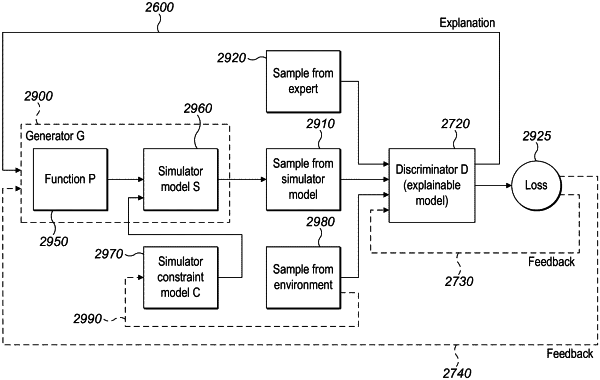| CPC G06N 3/08 (2013.01) | 30 Claims |

|
1. A method for providing an explainable model, the explainable model comprising one or more of an explainable autoencoder and an explainable generative adversarial network, comprising:
forming a first model and a second model; wherein one or more of the first model and second model is a white-box explainable model comprising a first feature importance vector having a global level of explainability; and
generating, with the first model and the second model, simultaneously in a single feed-forward step, one or more rules, a plurality of feature attributions, and one or more explanations, by steps comprising:
generating synthetic data from the first model and inputting the synthetic data and/or an input dataset to the second model, and forming an explainable model, the explainable model comprising one or more of an explainable autoencoder and an explainable generative adversarial network based on an output of the second model associated with the synthetic data and/or an input dataset, wherein forming the explainable model comprises identifying a plurality of partitions associated with the synthetic data and/or the input dataset, wherein the partitions are arranged in a hierarchy, each partition in the hierarchy having a predetermined proximity to each other partition in the hierarchy, said predetermined proximity defined by the hierarchy, wherein each partition in the hierarchy comprises a second feature importance vector having an intermediate level of explainability;
extracting partition information from the explainable model and identifying a plurality of feature attributions associated with a plurality of features of the input dataset; and
generating the one or more explanations based on the partition information and the feature attributions; and
terminating processing associated with generating the one or more rules, the plurality of feature attributions, and the one or more explanations, and outputting the one or more explanations, following the single feed-forward step.
|